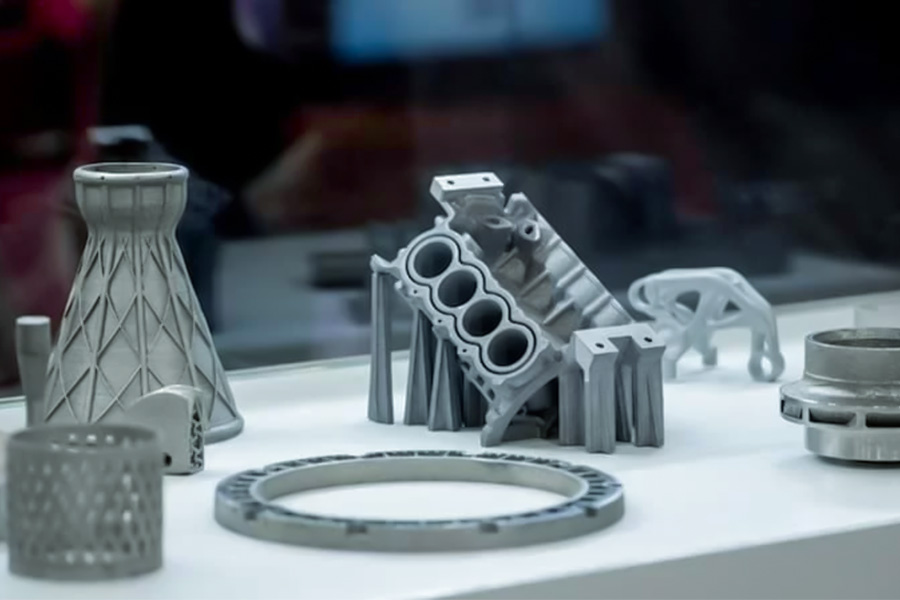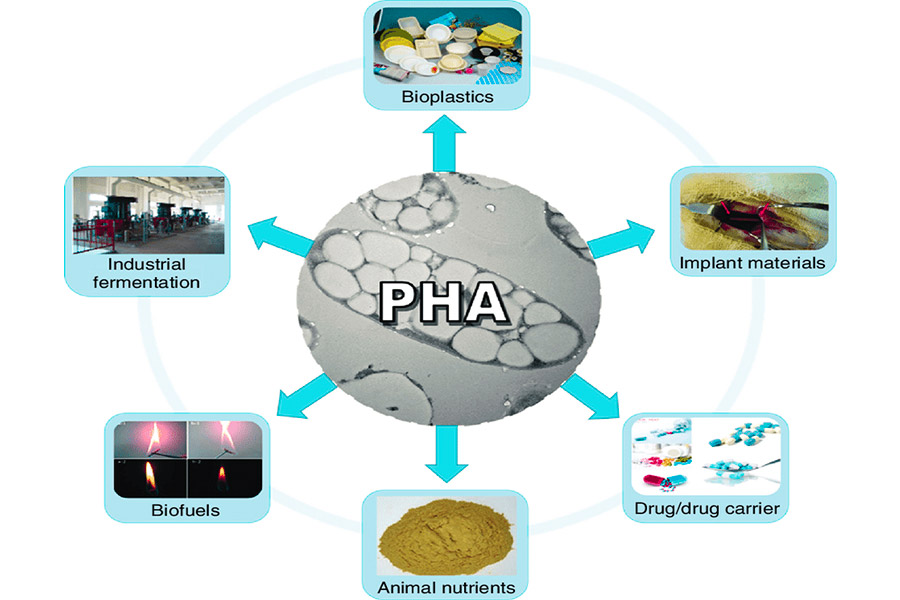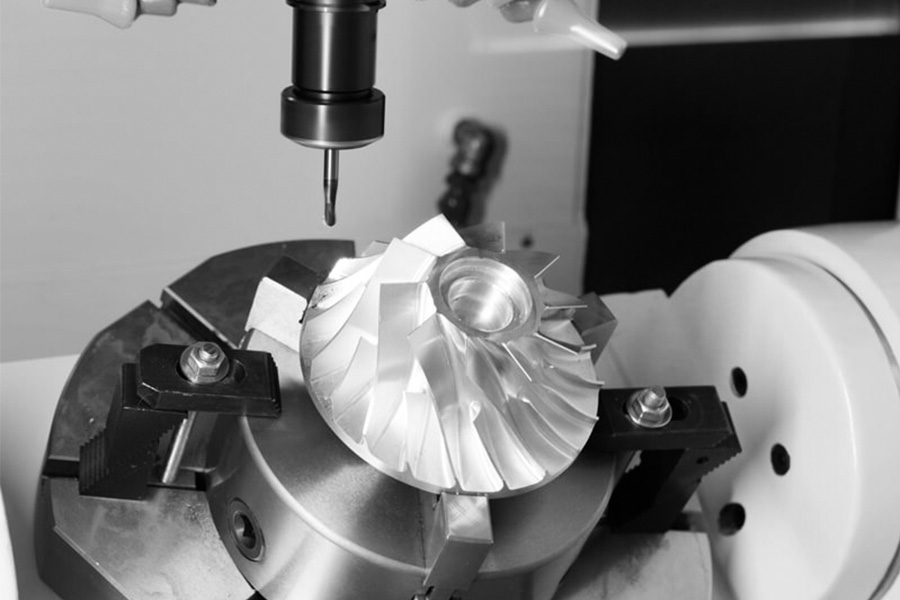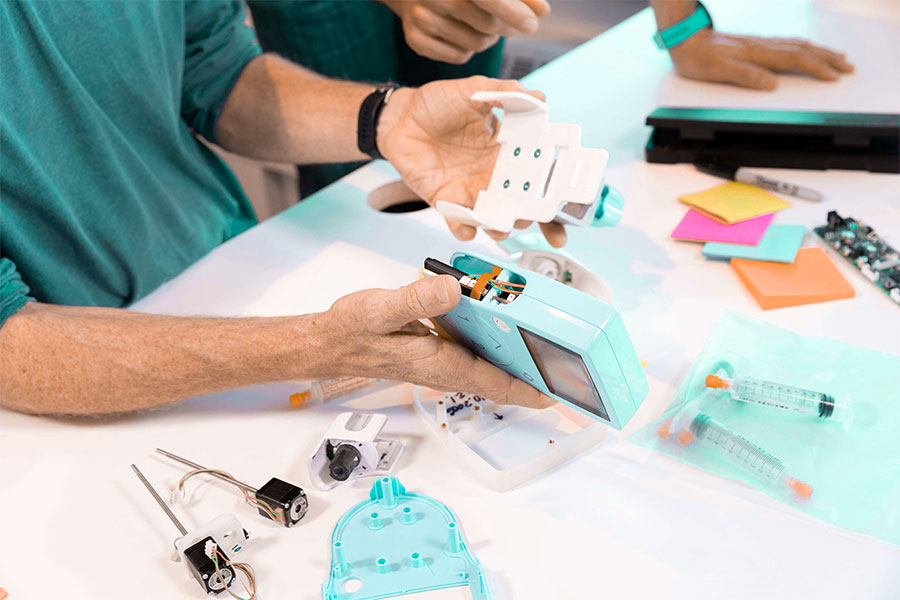In modern product development, rapid prototyping has become the core bridge from concept to reality. Rapid prototyping is a fast method to construct prototypes through techniques such as 3D printing and CNC machining, which can transform digital designs into tangible, measurable physical objects in a short time. rapid prototyping have become an integral part of product innovation by shortening iteration cycles and reducing trial and error costs, whether to validate user interaction experience or test structural strength.
Its core value lies to expose problems that arise in the later stages of traditional development to the early stages of design, thereby greatly reducing resource waste. In this paper, the key design and engineering considerations that need to be balanced in rapid prototyping will be discussed in depth, and how to achieve collaborative breakthroughs in efficiency and quality through scientific decision-making will be analyzed.

What is rapid prototyping and what is its core objective?
Rapid prototyps is a method to construct prototyping model quickly through 3D printing, CNC machining, injection molding and so on. Its core objectives are to identify potential problems and optimize solutions at an early stage of product development by minimizing development cycles and costs, validating the functionality, feasibility and user experience of design concepts.
This verification mode not only accelerates conversion efficiency, but also helps the team evaluate design rationality more intuitively through physical models, reducing the risk of later mass production.
Why is rapid prototyping an indispensable part of product development?
In today's fiercely competitive market, rapid Prototype have become the core catalyst product development from concept to mass production. It is irreplaceable in the following five ways:
1.Reduce trial and error costs
Rapid prototyping visualize design details through physical models, helping the team identify potential flaws before mass production. JS company relies on high-precision CNC machining and 3D printing to quickly produce metal or plastic prototypes, ensure designs meet tolerance requirements and reduce late-stage rework costs. In one client project, cost overruns were reduced by 30% to avoid errors in prototype validation.
2.Accelerated iteration and efficiency
JS has 1-2 weeks of fast delivery capacity (98% of orders are on time), allowing businesses to test multiple designs in the shortest time. A car customer with JS rapid prototyping service has completed prototyping of a steering system in 3 days, with an 80% increase in speed compared to traditional methods, giving it an edge over the market.
3.Multi material adaptation and functional verification
JS supports processing capabilities of more than 50 materials, including metals, plastics and composites, to meet needs ranging from lightweight to heat resistant. A prototype medical device needs to balance biocompatibility with mechanical strength. JS used a combination of 3D printed PEEK material and CNC titanium alloy components to help customers validate clinical applications at the prototype stage.
4.Cost controllability and efficiency gains
JS optimizes intelligent manufacturing processes, reducing average prototype manufacturing cost by 20% and project lead times by 15%. Its automated quotation system (which supports the uploading of files in the 20+ format, such as STEP/STL) and 24-hour technical response further compresses the decision-making process from design to production.
5.Green manufacturing
JS's environmentally friendly processes, such as 30% material recovery and 15% energy consumption, are highly compatible with rapid prototyping requirements. A new energy customer successfully validated the product's life-cycle sustainability through JS prototype testing of low-carbon materials, providing critical data support for green certification.
How can the key design of complex prototypes be achieved through process selection?
1.Multi process collaborative optimization
In order to meet the multi-dimensional demand of complex prototype structures, JS adopts the process strategy of CNC machining and 3D printing. For example, thin-walled metal parts are cut with precision using a five axis CNC machine, while internal support structures are quickly formed using 3D printing, allowing rapid mockup to meet functional testing requirements and reduce delivery cycles.
2.High-precision equipment guarantees
JS ±0.005mm CNC machining accuracy and industrial-grade 3D printing resolution can accurately reproduce the geometric features of complex prototypes. Prototypes of aviation component require processing of 0.3mm micropore arrays with a thickness of 5mm. By customizing tool paths and layered printing strategy, JS successfully implements the design requirements.
3.Material adaptability
JS's material resource library can provide a variety of options for different structural characteristics. carbon fiber composites, for example, can be quickly fabricated into high-strength, lightweight prototypes by compression molding, while silicone molding technology is used to verify the flexible structure of silicone rubber soft parts to meet needs ranging from rigid to elastic.
4.Digital simulation and process validation
Before production, JS uses CAE simulation technology predict processing risks and verify processing feasibility through rapid mockup. Simulations optimize complex vehicle bracket prototypes, optimize cutting parameters, increase final product qualification rate from 75% to 92%, and shorten R&D cycle by 40%.
5.Rapid response and iteration
JS's 24-hour technical response mechanism and automated quotation system support customers to quickly adjust design during the rapid mockup phase. A prototype robot joint failed to meet stress testing standards, and JS completed material changes and process correction within 48 hours to ensure the project was on time.

What are the impacts of emerging materials on prototype design?
1.Expanding the performance boundaries
Emerging materials have broken through the physical limits of traditional materials and opened up new paths for rapid prototypes to function and structure design. For example:
- High-strength lightweight materials, such as carbon fiber reinforced plastics and metallic glass, greatly increase the ratio of strength of prototypes, allowing designers to construct lighter, more durable structures.
- Intelligent materials such as shape memory polymers give prototypes the response capabilities dynamically.
| Material type | Core features | Direct impact on prototype design |
| Carbon fiber reinforced plastic | High specific strength and lightweight. | 15%-30% weight reduction for aerospace precision components. |
| Metallic glass | No grain boundary defects, corrosion-resistant. | Thin-walled structures improve fatigue resistance and are suitable for medical implants. |
| Shape memory polymer | Temperature responsive deformation. | Prototype validation of dynamic connectors and deployable satellite components. |
2.Challenges of process adaptation
The unique properties of emerging materials are often accompanied by increasing processing difficulty, which forces process innovation:
- Ceramic based composite materials require high-temperature sintering or special bonding techniques, traditional CNC machining is prone to crack. Laser sintering or nano-coating techniques are needed to overcome brittleness limitations.
- The interlayer shear strength of continuous carbon fiber reinforced plastics requires precise interlayer shearing technique, which is difficult to be done by traditional injection molding and depends on automated fiber placement technology.
3.Sustainable development and circular economy
Emerging materials drive rapid prototypes transition to environmental protection:
- Biodegradable materials such as PHA and PLA can degrade naturally after prototype testing, reducing resource waste. Some packaging prototype use PHA material that reduce carbon emissions by 60% over its entire lifecycle.
- Recycled materials,such as recycled nylon and recycled metal powder, reduce energy consumption through recycling. For example, a prototype car component uses 30% recycled aluminum powder, which can cut costs by 18% while reducing its carbon footprint.
| Material type | Environmental characteristics | Application scenarios and benefits |
| PHA (polyhydroxyalkanoates) | Industrial compost degrades completely in 180 days. | Prototypes of disposable medical devices with no residual contamination. |
| Regenerated carbon fiber | carbon fiber recovery recovery ≥90%. | New energy car battery box prototyped, 20% weight reduction, energy consumption. |
4.Innovative design thinking
Emerging materials lead to new design paradigms that break with traditional engineering logic:
- Biomimetic materials, such as lotus coatings, have inspired the design of ultra-lightweight insulation or self-cleaning prototypes. For example, the application of the honeycomb aerogel to prototypes of spacecraft insulation panels resulted in a 70% reduction in thickness and a three-fold increase in insulation.
- 4D printing materials,such as responsive hydrogels, enable prototypes to have time dimension response capability, such as the validation of prototypes for programmable drug delivery devices.

What are the advantageous scenarios of CNC machining in rapid prototyping?
In the field of rapid prototyping, CNC machining is the core technology for verifying complex structures and functions with high precision, high flexibility and wide range of material adaptability
1.High-precision complex structure prototype
- CNC machining can easily achieve complex geometry structure, such as deep cavity, thin wall, irregular surface, etc., which is difficult to achieve by traditional techniques, with accuracy ±0.005mm, satisfying the requirement of precision prototype verification.
- JS technical support: Five axis coupled machine tool and intelligent tool path planning technology ensure the complex structure of a single molding, reduce assembly errors. A prototype of a medical device with a micropore array of 0.1mm through CNC machining can be used directly for dynamics testing.
2.Strict tolerance requirements
- For prototypes such as aerospace and automotive components that require high dimensional accuracy, CNC machining can ensure consistency at the production level through custom fixtures and real-time error compensation techniques.
- JS technical support: Over 95% of projects achieve ±0.005mm tolerances in conjunction with coordinate measuring equipment, with a 98% one-time acceptance rate of prototype acceptance. A prototype of the car steering system of an automobile has been CNC processed, and the assembly clearance error is controlled to within 0.02mm.
3.Quick prototypes switch with multiple materials
- CNC machining supports rapid switching of materials such as metals (aluminum, titanium alloys), plastics (ABS, nylon), composites (carbon fiber), etc., satisfying the whole process from concept verification to functional testing.
- JS Technical Support: With more than 50 material inventory and automated loading and unloading systems, we can submit designs in the morning and start processing in the afternoon. For example, a prototyped of an unmanned aerial vehicle demonstrated a balance between lightweight and strength by alternating aluminum magnesium alloy and carbon fiber prototypes.
4.Rapid iteration of functional prototypes
- CNC machining can directly produce prototypes with functional details such as gear meshing and buckle structures, skip the die development stage and accelerate design verification.
- JS technical support: 24-hour technical response, 72 hours emergency delivery. The prototype robotic joints were quickly iterated through CNC, reducing the design cycle from 14 to 5 days and locking in the mass production schedule ahead of time.
5.High-surface quality prototype
The surface roughness (Ra 0.8-3.2μm) of CNC processed products can be directly used for appearance verification or precision assembly.
JS technical support: Standard post-treatment processes such as mirror polishing, sandblasting, anodic oxidation, etc. A prototype of a consumer electronics is verified by numerical CNC machining PVD coating synchronize metal texture with IP67 waterproof performance.

Medical device prototype vs. consumer electronics prototype: what are the differences in verification standards?
Prototyped verification for medical devices and consumer electronics are completely different depending on application scenarios, safety risks and regulatory requirements:
1.Regulatory and certification requirements
| Dimension | Medical device prototype | Consumer electronics prototype | JS support |
| Core certification | FDA 510(k)、CE MDR、ISO 13485. | FCC certification, CE certification, UL certification. | Provide material compliance verification and assist in the submission of certification documents. |
| Approval cycle | 6-18 months (including clinical trials and ethical review). | 2-6 months. | Accelerate prototype iteration to match authentication time nodes. |
| Document integrity | A complete risk analysis report and clinical data support are required. | Focus on functional and safety testing reports. | Provides full-process document management services. |
2.Test items and standards
| Dimension | Medical device prototype | Consumer electronics prototype | JS support |
| Biocompatibility | ISO 10993 (Cytotoxicity, Allergy Testing). | There are no mandatory requirements. | Medical grade materials such as titanium alloy and PEEK are available. |
| Environmental adaptability | High temperature and autoclaving (ETO, gamma rays) tests are required. | IP waterproof rating, high and low temperature cycling test. | Supports vacuum coating, anodic oxidation and other surface treatment processes. |
| Functional verification | Simulate human usage scenarios (e.g. implant fatigue life testing). | Drop test, button life test. | Customized fixture development and automated testing platform. |
3.Material selection and limitations
| Dimension | Medical device prototype | Consumer electronics prototype | JS support |
| Material safety | Only FDA approved biocompatible materials (such as ABS-M30i) are allowed. | Widely used are plastics, metals, and composite materials. | Inventory of over 50 types of medical/industrial grade materials. |
| Durability requirements | Must have a service life of at least 5 years. | Usually, the product design cycle is 2-3 years. | Provide material aging testing and accelerated life assessment. |
| Compliance constraints | Prohibit the use of carcinogens (such as DEHP plasticizers). | Focus on lightweight and cost optimization. | Material composition traceability and environmental certification support. |
4.Verification cycle and cost
| Dimension | Medical device prototype | Consumer electronics prototype | JS support |
| Prototype delivery cycle | 3-6 months (including multiple design iterations). | 1-3 weeks (quick sampling). | 24-hour technical response, priority scheduling of emergency orders. |
| Single verification cost | High (including certification fees and clinical sample fees). | Low (material and processing costs only). | Optimize the process to reduce prototype production costs by 30%. |
| Cost risk of failure | Very high (recall losses can run into billions of dollars). | Medium (brand reputation and after-sales service costs). | Provide DFM (Manufacturing Design) optimization suggestions. |
Validation standards for medical device prototypes focus on safety, taking into account regulations, biocompatibility and long-term reliability. Consumer electronics prototypes are user experience-oriented and cost effective. JS Company offers bespoke solutions for both prototypes with 98% on-time delivery and 20% cost savings, helping customers balance stringent standards with market opportunities.

What are the unique competitive advantages of JS's rapid prototyping service compared to traditional manufacturing?
1.Rapid delivery from month to day
Whereas traditional manufacturing relies on mold development and long-term scheduling, JS uses a hybrid process line for rapid prototyping:
- CNC+3D printing+vacuum replication, achieve 24 hours of rapid response.
- The delivery cycle of the first prototype of the standardized fixture library and automated programming system is more than 80% faster than the traditional model.
- Case study: An intelligent hardware enterprise preempted the market by completing 3 iterations of design prior to testing by competitors through JS's fast prototyping service.
2.Beyond the standard of traditional craft
Whereas traditional manufacturing is limited by device precision and manual operation, JS rapid prototyping relies on cutting-edge technology to achieve micrometer level control:
- The five axis CNC machining center supports ±0.005mm tolerances and can process 0.02mm thin wall structures.
- Industrial 3D printing has a resolution of 50μm, perfectly recreating complex surfaces and internal flow channels.
- Surface treatment technology (mirror polishing, PVD coating) enables prototyping directly to scalar production quality.
3.Addressing multi-material verification requirements
Whereas traditional manufacturing is constrained by a single material supply, JS has built an ecosystem of more than 50 materials, covering all scenarios of metals, plastics and composites:
- Medical grade materials (PEEK, titanium alloy) passed ISO 10993 biocompatibility testing.
- Specially engineering plastics (PEI, PPS) support verification of extreme working conditions such as high temperature and corrosion resistance.
- Composite materials (carbon fiber, glass fiber) -Lightweight and strength balance test.
- Strengths: Prototypes of drone propeller were validated using a carbon fibre+aluminium alloy blend, with a 30% weight reduction, while passing 100,000 fatigue tests.
4.Low-cost trial and error
Whereas traditional manufacturing requires high mold costs and the risk of mass production, JS's rapid prototyping reduces costs through the following strategies:
- Processing on demand: Small batch prototyping does not require mold opening.
- Process simulation optimization: CAE simulation reduces the number of trial and error cycles and reduces the iteration cost of robot joint prototypes by $50,000.
- Material recycling system: Reuse of waste materials, environmental costs reduced by 40%.
5.Change from prototype to mass production
Traditional manufacturing has pain point of disconnection between prototyping and mass production, and JS has achieved a smooth transition from rapid prototyping to mass production through its vertical integration capability:
- Process database sharing: Prototyping parameters applied directly to mold development.
- Flexible production line switching: The same equipment allows seamless connection from prototype to small-scale pilot production.
- Supply chain collaboration: Our own material warehouse and processing equipment reduce middleways and lead times three times as long as traditional models.
JS rapid prototyping service core indicators
| Competitive dimension | JS rapid prototyping | Traditional manufacturing mode | Technical gap |
| First version delivery cycle | 1-3 days. | 2-4 weeks. | 80% acceleration. |
| Minimum processing size | 0.02mm thin-walled structure. | Minimum order of 0.5mm. | 25 times accuracy improvement. |
| Optional types of materials | More than 50 types(metal/plastic/composite materials) | 5-10 standardized materials. | 10 times the selection space. |
| Comprehensive cost | Reduce small batch costs by 70% | Mold costs account for over 60%. | Cost structure reconstruction. |
| Mass production conversion rate | 90% of prototypes can be directly imported into mass production | Mass production yield fluctuates greatly, requiring repeated debugging. | Pre risk, increased success rate. |
Summary
Prototyping meaning transforming abstract concepts into verifiable entity models by minimizing time and resource investment, thus accelerating innovation iterations and reducing development risks. Its essence is not only technological innovation, but also the validation of design-driven thinking paradigms that seek the best balance between functionality, cost, and user experience by rapidly constructing prototyping model.
Rapid prototyping design enhances agility and responsiveness to feedback while improving accuracy and scalability, ultimately compressing development cycles, reducing trial and error risks, and translating uncertainty into actionable executable engineering insights, making it an indispensable approach in modern product development.
Disclaimer
The content on this page is for general reference only. JS Series makes no express or implied warranties regarding the accuracy, timeliness, or applicability of the information provided. Users should not assume that the product specifications, technical parameters, performance indicators, or quality commitments of third-party suppliers are completely consistent with the content displayed on this platform. The specific design feature, material standards, and process requirements of the product should be based on the actual order agreement. It is recommended that the purchaser proactively request a formal quotation and verify product details before the transaction. For further confirmation, please contact our customer service team for professional support.
JS Team
JS is an industry leading provider of customized manufacturing services, dedicated to providing customers with high-precision and high-efficiency one-stop manufacturing solutions. With over 20 years of industry experience, we have successfully provided professional CNC machining, sheet metal manufacturing, 3D printing, injection molding, metal stamping and other services to more than 5000 enterprises, covering multiple fields such as aerospace, medical, automotive, electronics, etc.
We have a modern factory certified with ISO 9001:2015, equipped with over 100 advanced five axis machining centers to ensure that every product meets the highest quality standards. Our service network covers over 150 countries worldwide, providing 24-hour rapid response for both small-scale trial production and large-scale production, ensuring efficient progress of your project.
Choosing JS Team means choosing manufacturing partners with excellent quality, precise delivery, and trustworthiness.
For more information, please visit the official website: jsrpm.com
FAQs
1.What are the advantages of CNC machining in prototypes?
The advantages of CNC machining are high precision, high efficiency, good material compatibility, good surface quality, and suitable for rapid prototyping of complex structures.
2.What are the tolerance control standards for rapid prototyping?
Rapid prototyping tolerances are adjusted according to process and material (e.g. FDM ±0.2-0.5mm), with the core meeting functional requirements rather than extreme precision to reduce costs and accelerate validation.
3.How does rapid prototyping respond to mass production needs?
Rapid prototyping reduces validation cycle times, reduces production risks and ensures a smooth transition from design to large-scale production by early validation of design feasibility, optimization of structures and adaptation to large-scale production processes.
4.How to achieve customized requirements through rapid prototyping?
Driven directly by digital design, without the need for traditional moulds, it supports flexible adjustments, responds quickly to personalized or small-batch needs, and reduces customization costs and cycles.






